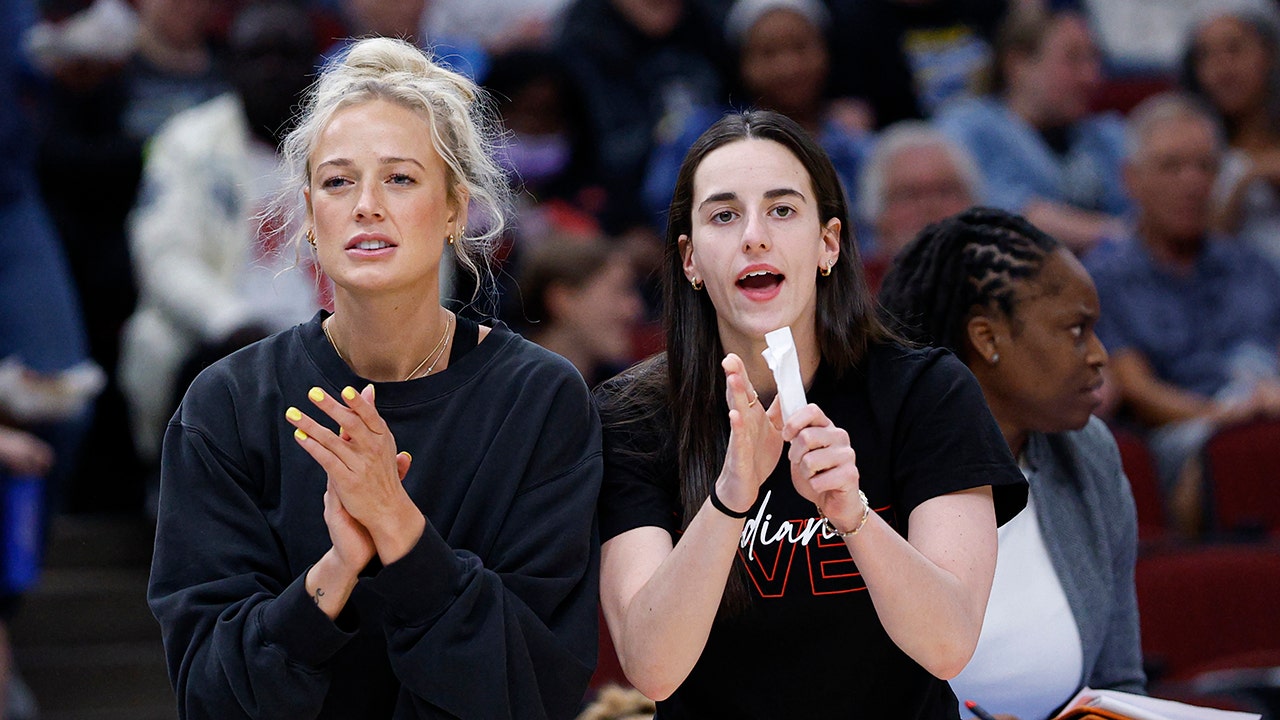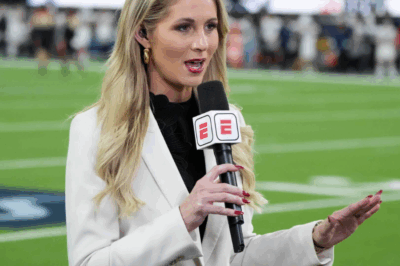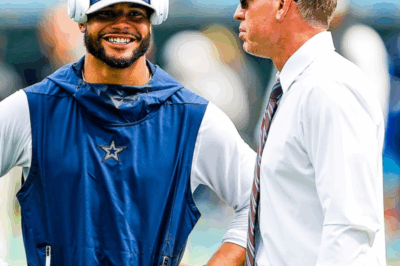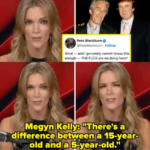The WNBA’s worst nightmare is coming true. A leaked sponsor memo confirms it: Caitlin Clark doesn’t need the league. Discover how one golf appearance exposed the league’s catastrophic failure and sparked a corporate revolt.
In recent weeks, the Women’s National Basketball Association (WNBA) has found itself at the center of a storm that threatens to shake its very foundation.
Once celebrated as a burgeoning league with a passionate fanbase and promising growth prospects, the league now faces an unprecedented crisis that has left sponsors panicked, fans questioning, and players demanding change.
This turmoil was sparked by a leaked memo—a document that has since gone viral—revealing the league’s mounting sponsor anxiety and internal struggles.
The memo exposes a league on the brink, revealing how mismanagement, lack of support for its biggest stars, and a failure to adapt to the modern media landscape have culminated in what many are calling the league’s most challenging period to date.
But amid this chaos, one player has emerged as a symbol of resilience and defiance. She is proving that she is bigger than the league itself—a figure who refuses to be silenced or sidelined.
Her actions and voice are shaking the sport’s establishment to its core, forcing everyone to confront uncomfortable truths about the league’s future.
This comprehensive report aims to unpack the details behind the crisis, explore the reasons behind the league’s struggles, and examine how one star’s bold stance is reshaping the narrative around women’s professional basketball.

The Leaked Memo: A Glimpse into the League’s Troubled Waters
The story begins with the leak of a confidential memo sent by WNBA executives to their sponsors and stakeholders.
The document, obtained by multiple media outlets, paints a stark picture: the league’s sponsors are losing confidence, and the league’s financial stability is under threat.
In the memo, league officials acknowledge a decline in viewership, dwindling attendance at games, and a failure to capitalize on the league’s growing popularity.
More alarmingly, they admit that the league’s reputation has taken a hit due to recent controversies involving players and management disputes.
The memo highlights several key issues:
Lack of Media Coverage: Despite increasing talent and compelling stories, the league struggles to secure prime-time slots on major networks. This limits exposure and diminishes sponsorship appeal.
Player Relations and Support: The league’s failure to adequately support its stars—both on and off the court—has led to discontent among players, many of whom feel undervalued and unheard.
Marketing and Branding Failures: The league has yet to craft a compelling brand that resonates beyond core fans, making it difficult to attract new audiences and sponsors.
Internal Discontent: Rumors of management conflicts and a lack of clear direction have further destabilized the league’s image.
The memo’s contents have sent shockwaves through the sports industry, prompting sponsors to reassess their commitments and fueling speculation about the league’s future viability.
The Catalyst: A Player Who Refused to Be Silenced
At the heart of this turmoil stands one player—an outspoken, charismatic, and highly talented athlete—whose actions have become a rallying cry for fans and fellow players alike.
This athlete, whose name has become synonymous with resistance and resilience, has refused to accept the league’s neglect and missteps.
Her decision to speak out publicly against league policies, social issues, and management decisions has ignited a firestorm.
She has used her platform to advocate for social justice, gender equality, and fair treatment, challenging the league’s status quo and exposing its shortcomings.
Her boldness has garnered both admiration and criticism. Some see her as a hero—a symbol of empowerment for women and marginalized groups—while others criticize her for disrupting the league’s fragile stability.
What is undeniable, however, is her impact. She has proven that her voice cannot be silenced and that her influence extends far beyond the court.
She is now a cultural icon, inspiring a new generation of athletes and fans alike.
The League’s Response and the Growing Divide

In response to the mounting controversy, the WNBA has issued statements attempting to downplay the crisis, emphasizing their commitment to growth and player welfare. However, behind closed doors, league officials are reportedly scrambling to contain the damage.
Some key points of the league’s response include:
Public Relations Campaigns: Efforts to reframe the narrative and highlight positive stories within the league.
Meetings with Sponsors: Attempts to reassure sponsors of the league’s stability and future plans.
Player Engagement Initiatives: Promises to improve support systems and communication channels for players.
Despite these efforts, the divide between league management and players continues to widen. Many players feel that their concerns are being ignored, and the league’s leadership is seen as out of touch with the realities on the ground.
Meanwhile, fans and social media users are rallying behind the outspoken star, amplifying her message and demanding accountability from league officials. Hashtags like #StandWithHer and #WNBARevolt are trending across platforms, signaling a shift in public sentiment.
The Broader Context: Challenges Facing Women’s Professional Sports
The WNBA’s struggles are not isolated. Across the landscape of women’s professional sports, similar issues persist—underfunding, lack of media coverage, and insufficient support for athletes who seek to use their platforms for social change.
Historically, women’s sports have faced systemic barriers that hinder their growth.
Despite increasing talent and audience interest, they often struggle to secure the same level of investment and visibility as their male counterparts.
The current crisis in the WNBA underscores these challenges and highlights the urgent need for structural reforms.
It also presents an opportunity for the league and its stakeholders to reevaluate their approach and prioritize athlete welfare, media engagement, and social responsibility.
The Power of a Single Voice: How One Player Is Reshaping the Narrative
The standout star’s refusal to back down has shifted the conversation from league failures to athlete empowerment.
Her actions have inspired other players to speak out, creating a ripple effect that could redefine the league’s future.
Her influence extends beyond basketball. She has become a symbol of resistance against corporate complacency and social injustice.
Her speeches, social media posts, and interviews have resonated with millions, making her a household name even among casual sports fans.

This phenomenon raises important questions:
Can a single athlete influence league policies?
Will her activism lead to meaningful change within the WNBA?
How will the league adapt to the new landscape of athlete-led advocacy?
While the answers remain uncertain, one thing is clear: her courage has sparked a movement that could reshape women’s sports for years to come.
Looking Ahead: The Future of the WNBA
The road ahead for the WNBA is fraught with challenges but also opportunities. To survive and thrive, the league must:
Address Internal Issues: Improve management transparency and foster a culture of respect and support for players.
Enhance Media and Sponsorship Strategies: Secure prime-time coverage and innovative marketing campaigns to attract new audiences.
Support Athlete Activism: Recognize and embrace players’ voices as vital to the league’s identity and growth.
Invest in Grassroots and Community Engagement: Build a broader fanbase through outreach and youth programs.
The league’s fate hinges on its ability to adapt and evolve in response to these pressures. The current crisis, while painful, could serve as a catalyst for positive change—if league officials are willing to listen and act.
A Turning Point in Women’s Sports?
The WNBA’s recent upheaval marks a pivotal moment in women’s professional sports. It exposes longstanding issues and challenges the league to reinvent itself in a way that values its athletes, respects its fans, and embraces social responsibility.
At the center of this upheaval is a fearless player whose voice has become a rallying cry for change. Her stand exemplifies the power of athlete activism and underscores the importance of authentic leadership in sports.
As the league navigates these turbulent waters, one thing is certain: the story of the WNBA’s crisis and the rise of its outspoken star will be remembered as a defining chapter in the history of women’s sports—one that could inspire lasting change and a new era of empowerment.
News
Gronk just dropped a BOMBSHELL in defense of Josh Allen. What he calls an “injustice to football” will send shockwaves through the entire NFL.
Gronk just dropped a BOMBSHELL in defense of Josh Allen. What he calls an “injustice to football” will send shockwaves…
BREAKING: The Super Bowl Just Got a Patriot Alternative. Guy & Angie Penrod are headlining a LIVE counter-programming event that promises to be the true “All-American” Halftime Show. This isn’t just a concert; it’s a statement.
BREAKING: The Super Bowl Just Got a Patriot Alternative. Guy & Angie Penrod are headlining a LIVE counter-programming event that…
Laura Rutledge in HOT water. ESPN just issued a formal warning that has the entire NFL world talking. What did she say?
Laura Rutledge in HOT water. ESPN just issued a formal warning that has the entire NFL world talking. What did…
Pam Bondi drops a LIVE TV BOMBSHELL about the Super Bowl, declaring a key figure a “weapon.” You won’t believe who she’s targeting.
Pam Bondi drops a LIVE TV BOMBSHELL about the Super Bowl, declaring a key figure a “weapon.” You won’t believe…
Troy Aikman just broke his silence and unleashed a fiery warning to Dak’s critics. You won’t believe what he said.
BREAKING: Troy Aikman just broke his silence and unleashed a fiery warning to Dak’s critics. You won’t believe what he…
Mike Tomlin just did the unthinkable. He broke the NFL’s #1 rule and publicly named the Browns GM, exposing a conspiracy that goes all the way to a $600 million stadium. This isn’t a game—it’s a sabotage of Shedeur Sanders’ career. The truth is out.
Mike Tomlin just did the unthinkable. He broke the NFL’s #1 rule and publicly named the Browns GM, exposing a…
End of content
No more pages to load












